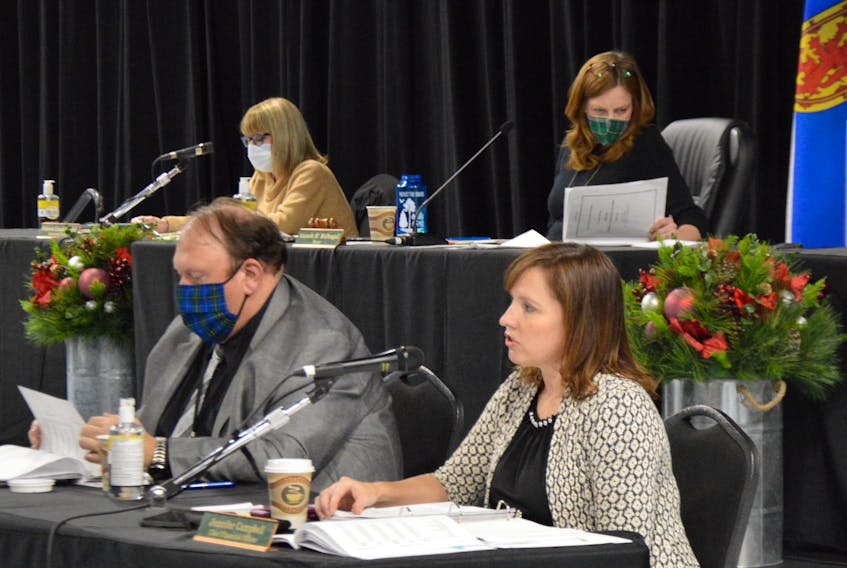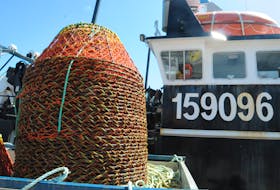SYDNEY, N.S. — The Cape Breton Regional Municipality's bottom line has so far weathered the storm of COVID-19, but the rough waters of the coronavirus have not been as kind to the Port of Sydney Development Corporation.
On Tuesday, the municipality’s chief financial officer Jennifer Campbell and the port’s chief executive officer Marlene Usher presented their latest fiscal updates at the first meeting of the recently-elected new CBRM council.
Campbell told the assembly, which abandoned its city hall chamber for the more spacious and social distancing-conducive Centre 200, that she is relieved at how well the municipality has fared financially. She said that as of the end of September, CBRM finances were $718,000 in the black.
“I think the biggest surprise so far this year to date is the fact that COVID really hasn’t impacted our revenues to the degree we had anticipated,” said Campbell, who acknowledged that $3.9-million in federal assistance has also helped significantly.
“We had cut our budget in the areas of fines, parking, revenue, permitting revenue, deed transfer taxes and all of those line items, and we have now already met our revenue targets or are at least close to it. We also weren’t expecting to receive any government assistance for COVID losses so that helps as well.”
PORT WOES

However, the financial picture for the Port of Sydney isn’t as rosy. In fact, after recognizing the corporation’s losses, due almost entirely to the cancellation of the 2020 cruise ship season and the loss of revenues such as berthage fees and passenger tax, Usher asked council for permission to use the port’s contingency trust to cover its operating expenses. The fund, which as of March contained $1.1 million, started with leftover money from the 2012 Sydney harbour dredging project.

“We have received no (government) funding because we have not qualified for federal money as we are associated with the CBRM, and we are now left in a situation where we have large deficits and no way to fund them,” explained Usher.
“So, our board decided to ask the federal government to forgive us the obligation of using that money for navigation aids since it is a federal responsibility. They said yes, that we could use that money for operations but that it must be approved by the chair of the port’s board and the mayor of the CBRM.”
Afterwards, council voted 12-1 in favour of allowing the port to use the trust fund money, initially restricted to limited expenses such as the installation of navigation aids, to pay for port operations. The only dissenting vote was that of District 8 councillor James Edwards who said he did not feel as if he had enough information about the situation.
“I think there were some pertinent questions asked, but I think there was lots of opportunity for more explanation – I couldn’t ascertain was going to happen with the contingency fund,” said Edwards, who added that he fully supports port development and was only looking to learn more about the goings-on of the port corporation.
Several other councillors also expressed concerns about how the port corporation will survive if and when it uses up the trust fund money.
Usher, for her part, expressed optimism about the return of the cruise industry in the future. However, after losing the entire 2020 cruise season, she was not so enthusiastic about a return to normal in 2021.
“We’re hoping we get some cruise ships next year, but we’re not very optimistic,” she admitted.
Ironically, the port’s second berth, completed earlier this year, has yet to serve a visiting vessel.
In 2019, 78 per cent of the Port of Sydney’s revenues were from the cruise ship industry. This year, 117 cruise ships, including 27 that were destined for the new berth, were scheduled to visit Sydney which had expected to host an estimated that 212,597 passengers and 89,351 crew members.
David Jala is a political reporter at the Cape Breton Post.









